Generative Engine Optimization (GEO) for Mere Mortals
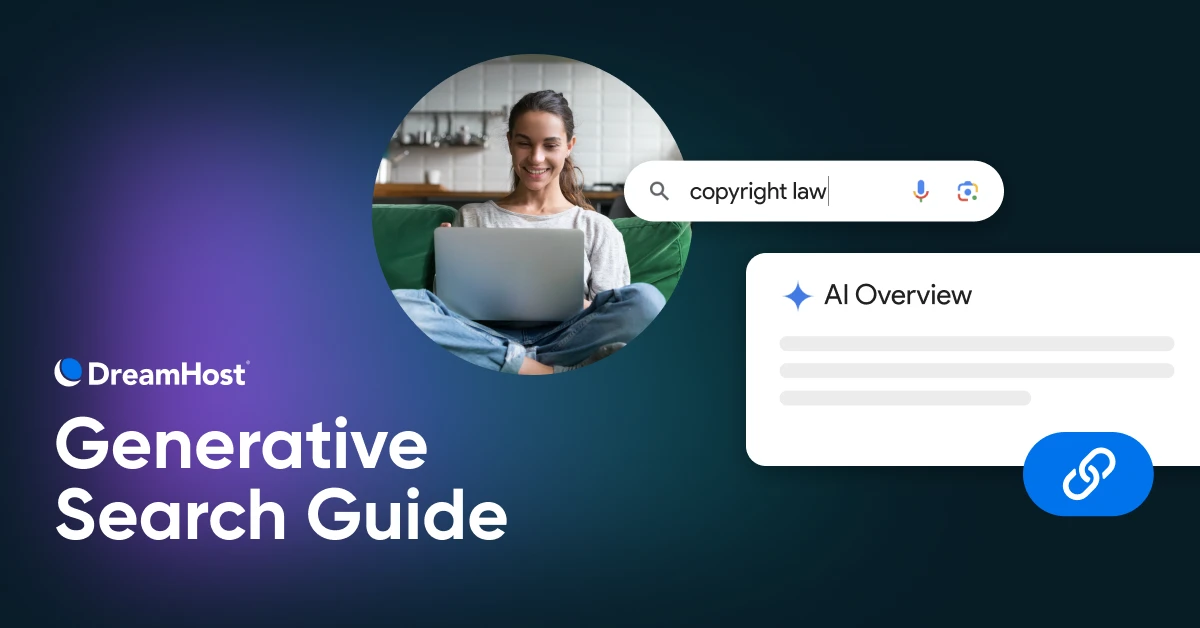
TL;DR:
- Traditional search clicks are declining while AI-driven search is on the rise.
- GEO focuses on entities, citations, and authority signals, not just keywords and backlinks.
- SEO foundations (site speed, quality content, semantic HTML) still matter, but you’ll need schema, entity mapping, and citation-worthy snippets to win AI mentions.
- GEO success comes from building entity authority across the web through profiles, mentions, research, and author bios.
- The 30-day GEO Sprint framework:
- Week 1: Audit your site’s speed, schema, and mobile readiness.
- Week 2: Define your entity with schema and consistent profiles.
- Week 3: Reshape content for clarity, answers, and AI readability.
- Week 4: Prove authority with bios, citations, and original data.
- Track GEO with new metrics such as AI citations, direct answer inclusion, and entity recognition strength.
You okay, buddy? You’ve been staring at that dashboard for half an hour now.
We know exactly what caught your eye: a scary drop-off in organic search traffic.
You’re not alone — loads of site owners are seeing the same trends. Even SEO experts are struggling to find solutions.
Alas, the outlook is far from rosy. Gartner forecasts that search query volume will decline by 25% by 2026. Yikes.
via GIPHY
But don’t panic. This isn’t the traffic apocalypse. There’s still plenty of organic traffic up for grabs. Visitors are just arriving via a different route: AI.
Millions of people are now using ChatGPT, Claude, Google Gemini, Perplexity, and other apps to find information. That includes figuring out where to spend their money.
Generative engine optimization (GEO) is about making your site irresistible to AI models. In this guide, we’ll show you how to prepare your brand for the brave new world of search.
What the Heck Is GEO?
GEO is the process of optimizing your online presence, so that your brand will appear in AI responses. It’s related to SEO, but they’re not twins… More like cousins.
While SEO is still very important, GEO is getting a lot of attention right now, and for good reason:
- AI search visits are expected to overtake traditional search visits by 2028 (Semrush)
- Some brands have seen AI traffic leap over 500% this year (Search Engine Land)
- The average click from AI is worth 4.4x more than the average organic search visit (Semrush, again)
- 26.6% of all internet users have seen AI Overviews (AIO) (Google)
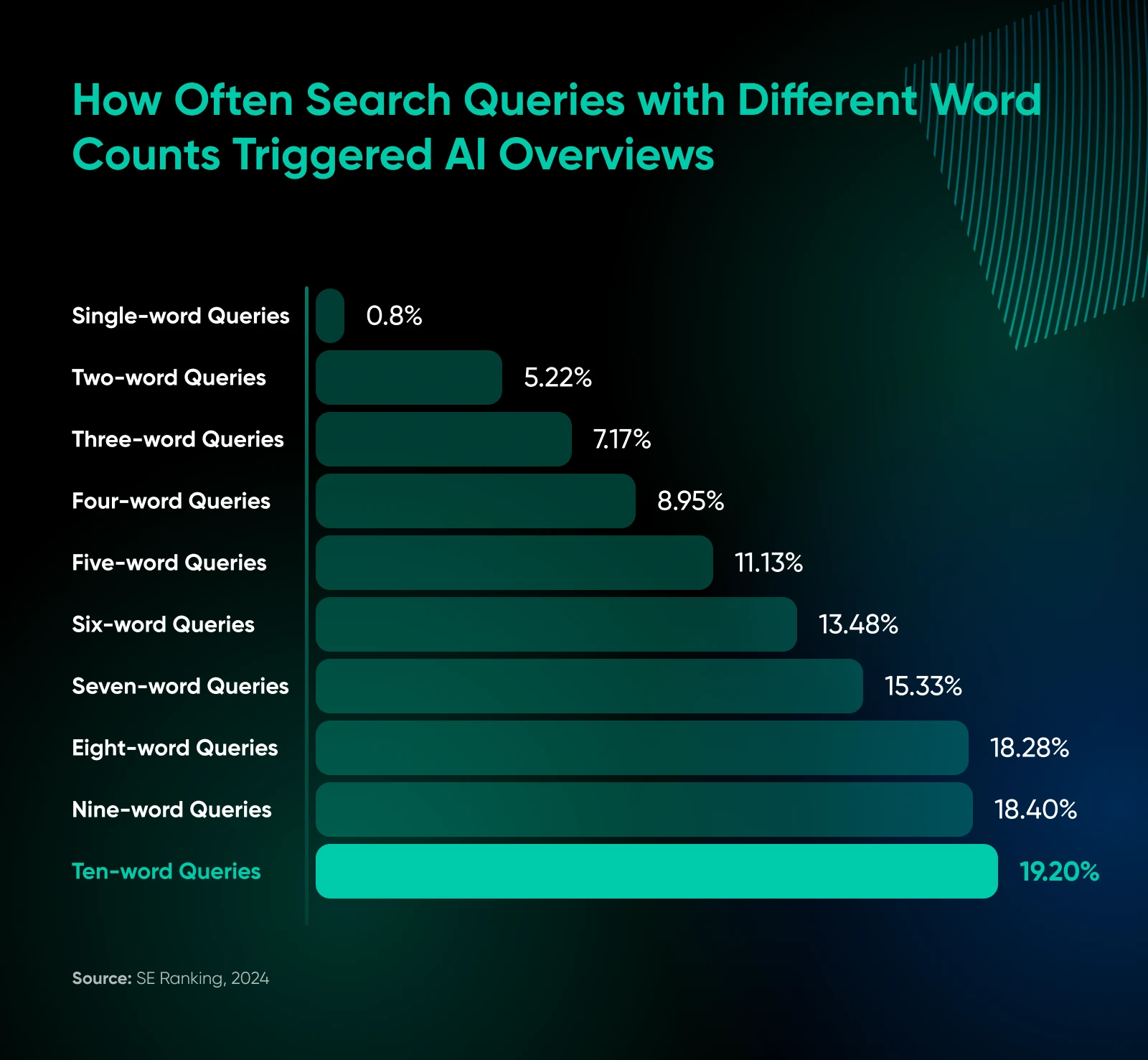
For many brands, the impact of AI is already visible in search data.
In Google Search Console, impressions often hold steady while clicks decline — the so-called “alligator chart.”
This pattern exploded after Google’s March 2025 update, which ramped up AI Overviews. Instead of clicking links to find answers, many users now get what they need from AI-generated summaries.
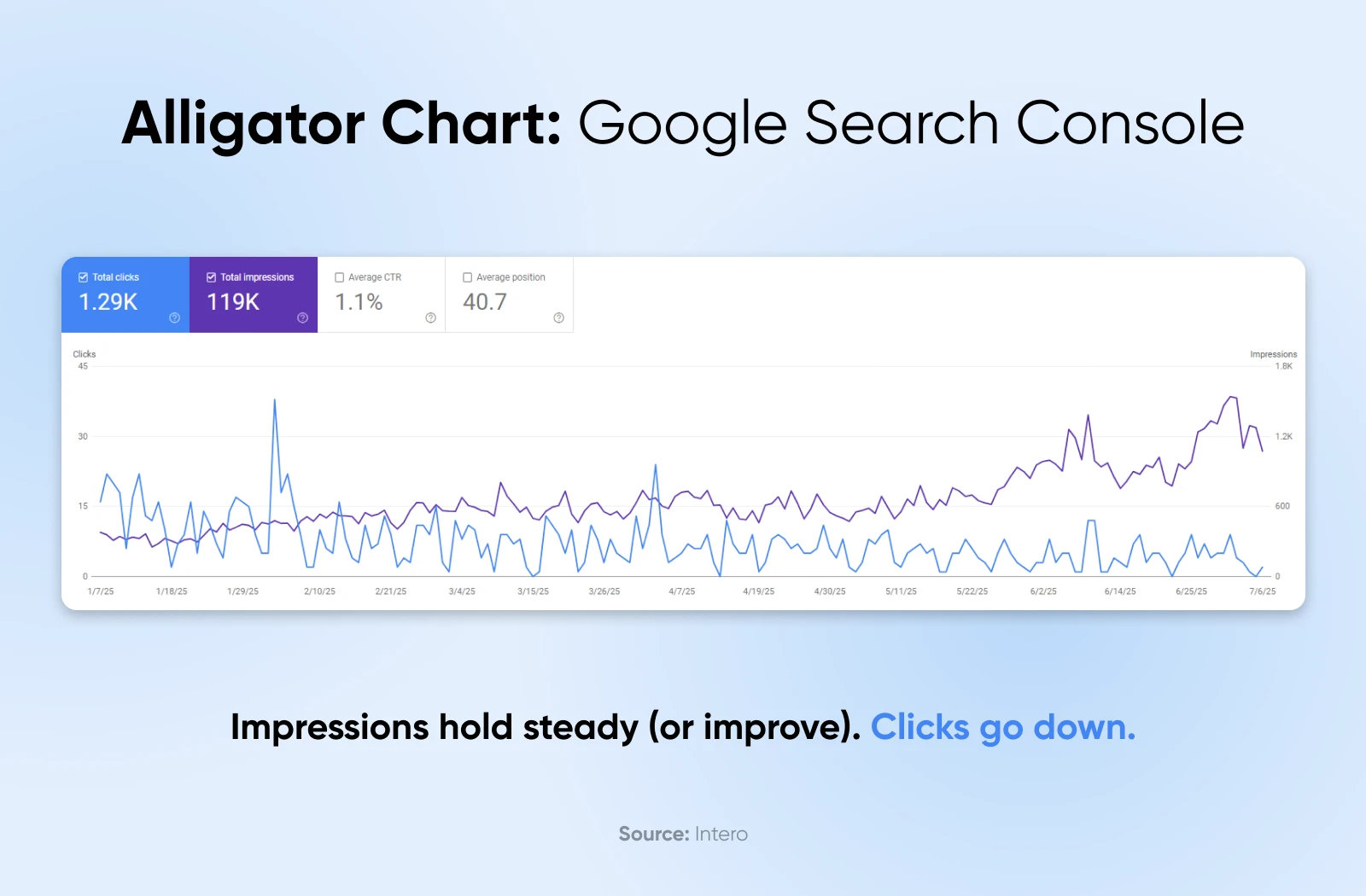
It’s one of the clearest signs that GEO is here to stay.
How Is GEO Different From SEO?
The difference between GEO and SEO comes down to how you optimize your site. SEO is about language, whereas GEO is a game of online influence.
To explore the nuances, let’s compare search engines with AI platforms.
Traditional search engines (e.g., Google, Bing) work like travel agents. You explain where you’d like to go, and the app gives you some options to match. Helpfully, they order the results by relevance to your original query.
AI platforms (e.g., ChatGPT, Gemini) are more like analysts. They “read” loads of online content to formulate custom answers, citing specific sources where appropriate. These responses are based on aggregated information, rather than any specific page.
What does this mean for your site? Here are the key shifts:
- Keywords > entities: Stuffing your content full of relevant terms won’t impress ChatGPT. AI models look for “entities” — clearly defined concepts that the AI can read about and understand.
- Rankings > citations: AI platforms don’t produce rankings, but they do link to pages as points of reference. You want your site to appear here.
- Backlinks > authority signals: Traditional search looks at backlinks to decide which pages are “important.” AI models prefer to measure which websites and brands are most often mentioned in popular online spaces, such as Wikipedia or Reddit.
- Ranking matters > winner takes all: Because AI only cites sources within responses, only the most relevant content is going to feature. Being the 10th best is no longer good enough.
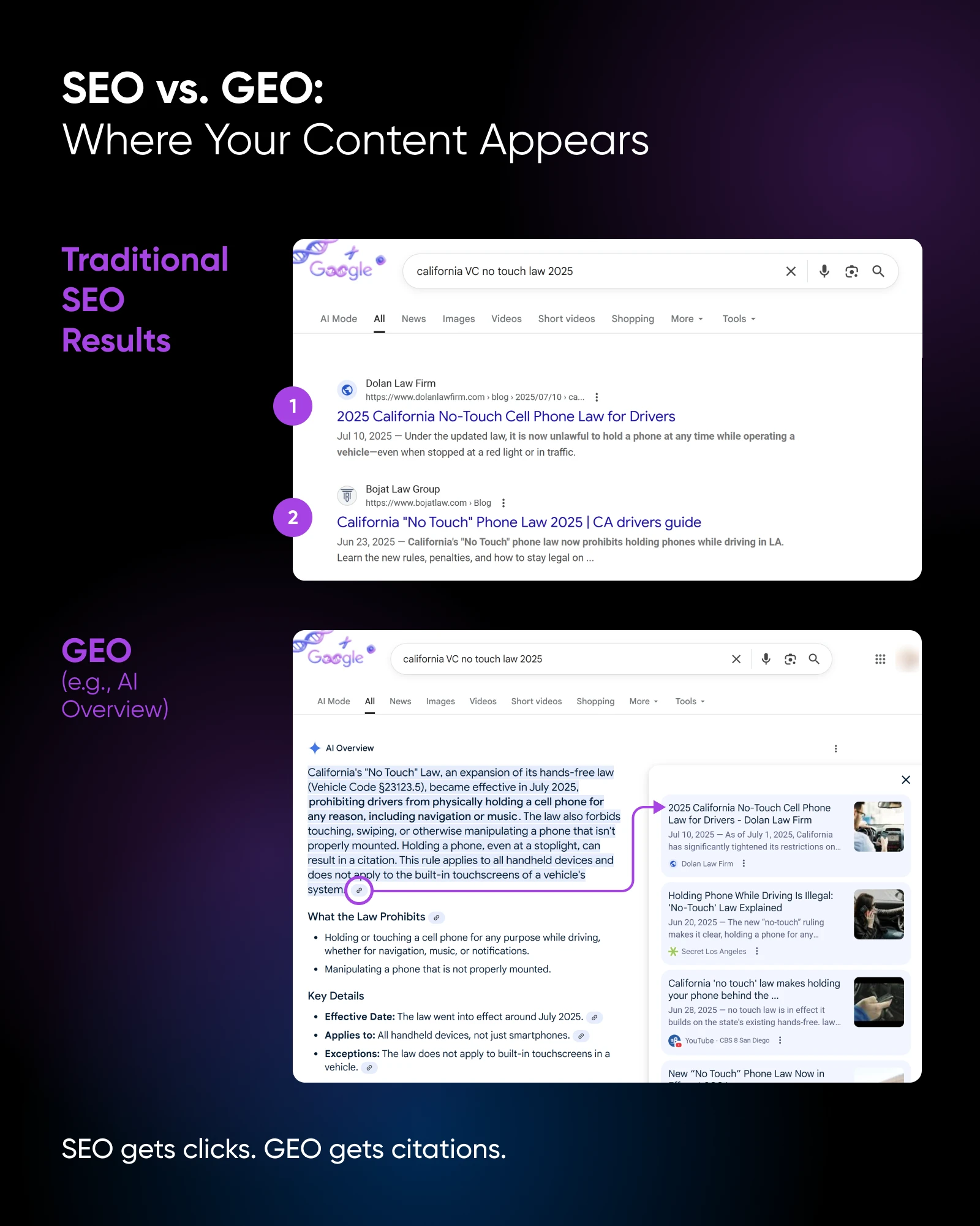
How does this affect your site? Well, let’s first look at what stays the same.
Your SEO Foundation Still Matters (Hallelujah!)
If your website is already optimized for search, you’re in a good place for GEO.
AI platforms actually use traditional search engines to find content. We found out this year that ChatGPT scrapes search results directly from Google.
Just as importantly, many good practices in SEO also apply to GEO. For example:
- Fast loading times are still vital: Search engines tend to recommend pages that load quickly, because that’s what users want. AI prefers speedy sites because they’re quicker to crawl.
- High-quality content always wins: Original insights are valuable to readers, and they’re much more likely to earn recognition in AI-generated answers.
- Clean, semantic HTML is essential: Well-written markup enables search and AI crawlers to explore your site efficiently.
Semantic Markup
Semantic markup is a process of structuring HTML to emphasize the content’s meaning, rather than its appearance. This often makes it easier for search engines and real users to understand the content.
Read More
So, no need to touch any of that, but there are some tweaks you should be making.
How To Adapt Your Site for GEO
Optimizing your site for AI doesn’t require radical changes. It’s more about shifting your priorities and adapting to new concepts. Here are some of the most important adjustments.
Forget Keywords, Focus on Entities
While SEO was based around keywords, GEO focuses on entities: clearly defined people, products, or brands that AI can recognize.
So, instead of stuffing your content full of terms related to your target phrase, aim to explain your brand, product, or service in terms that AI can understand and cite.
An example will help here. Imagine you’re writing an article about hosting. This is how you would optimize the content:
- SEO: Blog post full of terms like “hosting,” “fast hosting,” and “website hosting.”
- GEO: Your post would include regular mentions of your brand in context. “DreamHost is a WordPress hosting provider based in the U.S., known for one‑click staging, backups, and BunnyCDN.”
AI doesn’t just match keywords; it “understands” things. Your job is to explain what your “thing” is.
Entity Mapping Is the New Internal Linking
By connecting pages that cover related content, you give search crawlers a guided tour of your site.
But in GEO, you don’t need to connect pages. You need to connect entities (the clearly defined things).
When you link from your “WordPress hosting” page to your “SSL certificates” page, you’re teaching AI that these concepts are related in your little online world.
Schema Is Now Absolutely Essential
Schema is your translator between human-readable content and AI comprehension.
It’s like having a really good interpreter at an international business meeting. Sure, everyone might speak some English, but wouldn’t you rather be crystal clear?
AI systems are obsessed with structured data. While they can figure out that you’re a business without schema, there’s no reason to make them guess.
Entity Authority Is More Important Than Domain Authority
Your domain authority score is becoming less important than your entity authority.
And no, there’s no tool that measures entity authority (yet).
Entity authority is about who you are across the entire internet, not just on your website.
It’s Google knowing you’re a business. It’s LinkedIn showing your company history, and industry publications mentioning your expertise. If you’re really doing something right, it could even mean Wikipedia confirming you exist.
Your entity authority is the sum total of your digital footprint as a recognized “thing” in your industry.
Meta Descriptions Should Be Speakable Snippets
Your meta descriptions should be citation-worthy, not just click-worthy.
Ask yourself: if an AI were answering a question about your service, what 1–2 sentences would it quote?
“Best hosting deals – click here!” isn’t going to cut it.
You need something more like: “DreamHost provides managed WordPress hosting with 100% uptime guarantee and one-click installations.”
Now that’s a description worth quoting!
Your 30-Day GEO Sprint: From Invisible to AI Darling
If you’re committed to attracting AI traffic, here’s a month-long plan that will guide you toward GEO success.
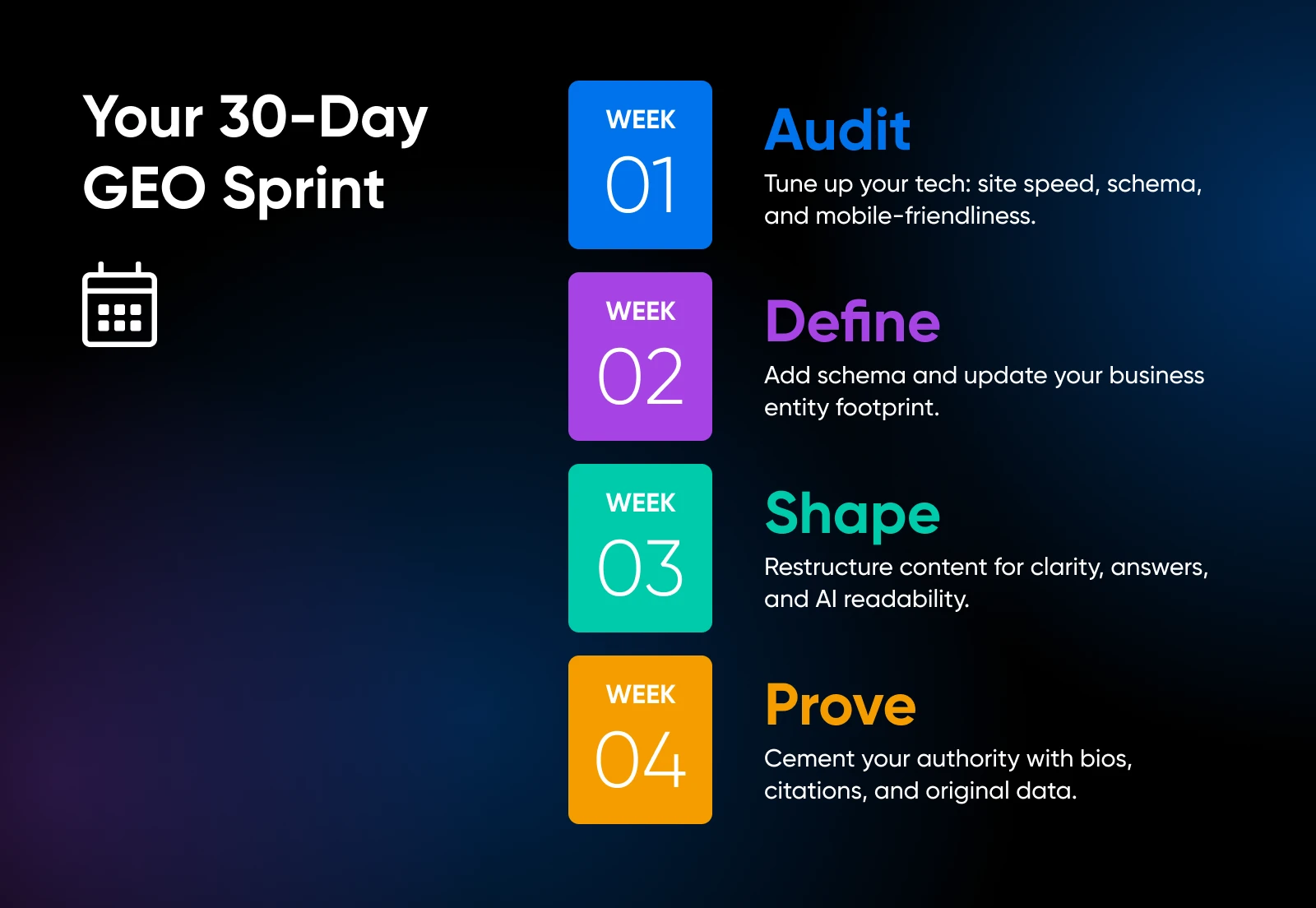
Week 1: Building a Solid Technical Foundation
Before you change any content, it’s important to build the foundations for your GEO campaign. That means auditing the technical underbelly of your site, and tuning up the engine where appropriate.
Week 2: Entity Building
Okay, your foundations are looking rock solid. Now, let’s tell AI exactly who you are, what you do, and why you’re important.
1. Create your organization schema. This is your business’s official introduction to the AI world — like a digital ID card. Add your Organization schema markup to your homepage and to other key business pages. Include critical details like:
- your name
- URL
- logo
- contactPoint
- sameAs links to social profiles
- your founder (with their Person schema)
- location
- foundingDate
This tells AI precisely who you are, where you came from, and how to find you.
Pro tip: Not sure how to build your schema? There are some great resources at schema.org, including a free validator tool.
2. Add person schema for key team members. If you have a blog, expert guides, or “About Us” pages, don’t just list names. Add person schema markup for your key team members and content authors, including:
- their name
- jobTitle
- alumniOf (if applicable)
- sameAs links to their professional social profiles
It’s then crystal clear why your team is a great source of information!
3. Update all your business profiles for consistency. Go through your Google Business Profile, Yelp, social media profiles, and any other online listings. Ensure your business name, address, phone number, and description are identical across the board. Inconsistencies confuse AI and erode trust.
4. Create a “speakable” snippet for your homepage. Craft a super-concise, definitive sentence or two that clearly states what your business does and for whom. This is the snippet an AI might directly quote if someone asks, “What is [YOUR COMPANY]?” or “What does [YOUR COMPANY] offer?”
Week 3: Reshaping Your Content
The third week of transformation is about making content that’s easy for AI models to digest. Tasty, even.
Week 4: Authority Building
You’ve got the tech, the structured identity, and AI-friendly content. Now, it’s time to cement your status as a go-to authority.
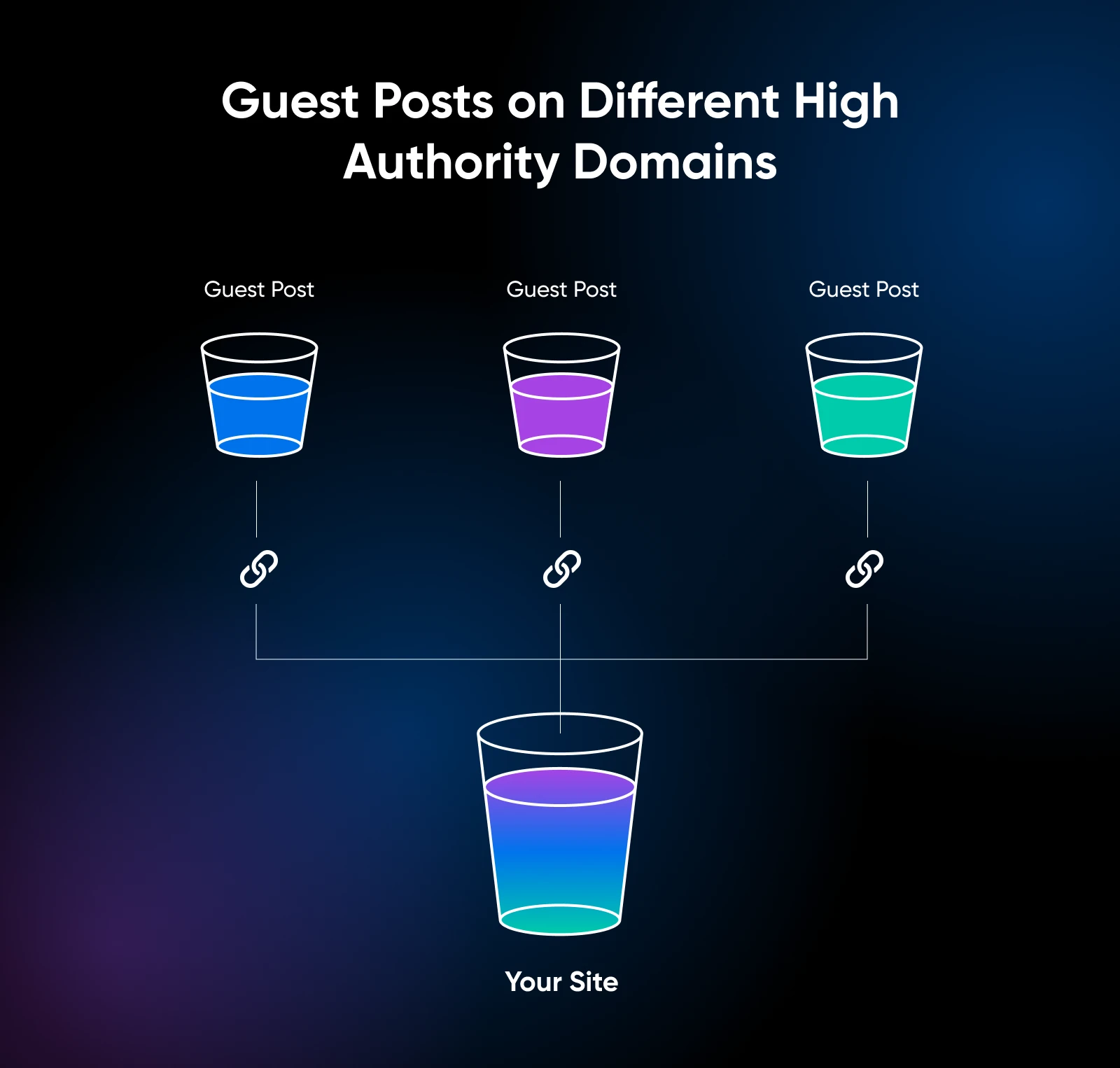
Tracking Your GEO Progress: Signals To Monitor
Assuming you’ve worked through all the steps above, you should be well on the way to dominating generative search.
But smart marketers know the game is never truly “over.” It’s about constant observation and adaptation.
Goodbye Rankings, Hello AI Metrics
Forget just obsessing over search rankings. The GEO era introduces some exciting new ways to track your progress.
AI Citation Mentions
This is your new gold standard. Set up automated searches across major AI platforms (ChatGPT, Claude, Perplexity, etc.) using your brand name, key product names, and unique data points you’ve published.
Citation rate = AI mentions / total relevant queries tested
A good citation rate starts at 15–20% for queries where you have authoritative content.
Direct Answer Inclusion Score
How often does your content appear in answers, rather than just getting a link? Use tools like Perplexity.ai’s source viewer or manually check ChatGPT’s responses. Track the results as a percentage.
Answer inclusion score = direct answer appearances / total citations
Aim for at least 40% direct inclusion rate. If you’re always a source but never actually mentioned in the answer, your content probably isn’t structured clearly enough for AI.
Entity Recognition Strength
Monitor how consistently AI systems recognize and correctly describe your brand entity.
Ask AI platforms “What is [YOUR BRAND]?” and “What does [YOUR BRAND] do?” across different contexts
Score responses on accuracy (0–100%) and completeness.
Query Coverage Percentage
Map out the top 50 questions your customers ask, using support tickets and sales team feedback. Test each question across AI platforms quarterly — what percentage generates answers that could include your content?
Aim for 80% coverage for questions directly related to your products/services, and 50% for broader industry questions.
How Do You Track GEO Performance?
Running all these tests by hand once is okay, but if you want to track your GEO performance over time, it’s worth using a dedicated tool.
Right now, Ahrefs Brand Radar is our go-to choice. It provides accurate data on your “brand citations” across various AI search engines, with the option to filter mentions, impressions, and share of voice across multiple entities.
We also like Gumshoe.ai. This specialized platform tracks a range of useful AI search metrics, covering brands, personas, and topics. Although it’s still a relatively new arrival, we’re impressed by the data and usability of this tool.
GEO Isn’t a Threat — It’s a Huge Opportunity
Man, that was a lot of new information. It feels kinda overwhelming.
The important thing to remember is that your competitors are feeling the same. And many aren’t as well-informed as you.
If you can optimize your brand for AI now, you’ll be ahead of the vast majority of site owners.
We’re at a major crossroads in search, and first-movers will have a huge advantage going forward.
Seize the day, friend. You could be ruling AI responses for many years to come!



